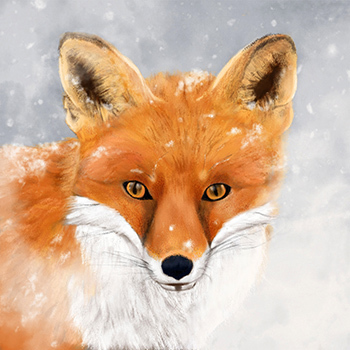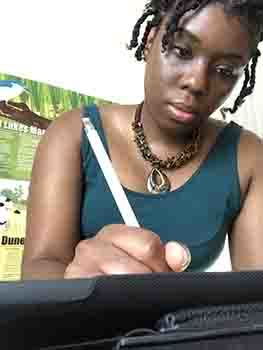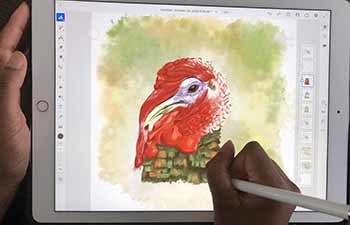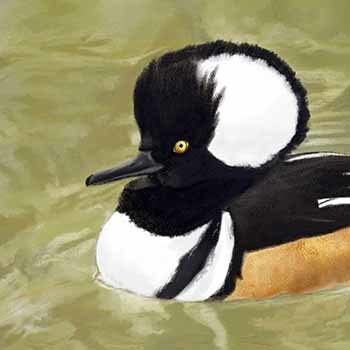Showcasing the DNR
Editor’s note: In celebration of the department’s centennial anniversary, the Showcasing the DNR feature series will highlight one story each month during 2021 that recalls various accomplishments of the department over the past century.
By ERIC HILLIARD
Michigan Department of Natural Resources
If you're a Michigan hunter, you’ve likely noticed a couple of changes to the hunting digests – the annual booklets about rules and regulations – this year.
The most noticeable change from the outside was the illustrated covers, and one vintage photograph on the cover of the main Hunting Digest. The other noteworthy change on the inside was the question-and-answer format for the regulations.
With 2021 marking the 100th anniversary of the Michigan Department of Natural Resources, the DNR Wildlife Division wanted to do something special to celebrate the milestone.

"Magazine and book covers printed during the 1910s to 1920s often featured illustrations or photographs," said Shennelle Anthony, graphic designer for the Wildlife Division. "However, I quickly realized that taking modern pictures and adding filters and effects were not as visually interesting as I thought they would be. That's why I took on the challenge of trying my hand at illustration using an iPad and Apple Pencil – a 21st-century technology used to capture an early 20th century feel."
Before starting an illustration, Anthony would collect photos of the wildlife species featured on the cover, along with potential scenery for the background. These images served as references to visually guide the process.
Next, she would sketch out a series of thumbnail-sized concept drawings on paper to build out the possible scenes. Thumbnail sketches are small drawings, quickly done, that serve as a form of brainstorming for Anthony’s process.
Once she selected a thumbnail image, she moved onto the digital creation process on the iPad. She used Adobe's Fresco application on the iPad to create the final illustrations.
|

"I started my digital drawings with a light sketch and then I gradually built my colors. First, I filled the major shapes and objects with an undertone, and then I added layers and layers of varying hues,” Anthony said. “I also used different brushes to create various textures. Towards the latter part of the process, I added details, such as highlights."
In total, Anthony worked on five illustrations: wild turkey, red fox, hooded merganser, black bear and elk.
"I learned that fur is extremely difficult to draw, and water can also be a challenge,” she said. “I experimented, and even developed my own techniques, to be more efficient. My process was largely about problem-solving and thinking outside of the box to get the results that I wanted."
Beyond the covers of the booklets, readers can find a significant change in the format of the regulations this year. The question-and-answer format was not inspired by the 100th anniversary like the illustrations, but rather out of the desire to clarify the rules, especially for new hunters.
|

The format provides a few advantages over the old way of doing things. The first is that people often are searching the digest to find the answer to a question: "Can I do XYZ while I'm hunting?"
When the questions posed in the book are almost identical to ones in the reader's mind, it can make finding the correct information much faster and easier.
A hunter survey with over 2,500 respondents indicated a Net Promoter Score® (a measure of customer satisfaction with a product or service, with a scale of -100 to 100) of -45 when it came to finding information in the old digest format, versus a Net Promoter Score® of -1 when it came to finding information with the new format.
This represents a significant improvement in the ease of finding information.
The Q and A format also paves the way to the future, where digital assistants like Alexa, Google and Siri can find information and relay it to those talking to the devices or even potential DNR chatbots yet to be developed.
|

Additionally, the nebulous "hunters can," or "a hunter can" was replaced with "you can."
Over the years, the DNR has found that even clear regulations will still generate calls for clarification because people are unsure if they meet the criteria for the hunter described in the digest scenario.
By clearly stating, "Yes, you can do XYZ," or "No, you cannot do XYZ," people are more confident that the scenario in the regulations applies to them.
One DNR customer service representative noted a 33% reduction in spring turkey hunting regulations calls compared to the previous year. Anecdotally, others said that the types of questions they received were different than in the past.
They indicated fewer regulations clarifications, but questions concerning issues like selecting the correct hunting unit for the license drawing persisted.
Whether it was the illustrated covers offering a bit of nostalgia as the DNR celebrates its centennial, or the new Q and A format of the regulations to make things easier for hunters to understand, the DNR Wildlife Division hopes this year's digest experience is the best yet.
While 2022 will mark the return to photographs on the covers, the question-and-answer format appears to be here to stay, with an aim to continue to refine and improve the regulations to make them as clear, and user-friendly, as possible.
You can find digital versions of all the hunting digests at Michigan.gov/DNRDigests.
|
Check out previous Showcasing the DNR stories in our archive at Michigan.gov/DNRStories. To subscribe to upcoming Showcasing articles, sign up for free email delivery at Michigan.gov/DNR.
/Note to editors: Contact: John Pepin, Showcasing the DNR series editor, 906-226-1352. Accompanying photos and a text-only version of this story are available below for download. Caption information follows. Credit Michigan Department of Natural Resources, unless otherwise noted.
Text-only version - Showcasing Story - Digests
Drawing: Shennelle Anthony, a graphic designer with the Michigan Department of Natural Resources, is shown working on a computer drawing of a wild turkey that is featured on the cover of this year's Turkey Hunting Digest.
Fox: A computer drawing of a red fox by Shennelle Anthony, a graphic designer with the Michigan Department of Natural Resources, is shown. The drawing will be on the cover of this year's Furbearer Hunting and Trapping Digest.
Merganser: A computer drawing of a male hooded merganser by Shennelle Anthony, a graphic designer with the Michigan Department of Natural Resources, is shown. The drawing will be on the cover of this year's Waterfowl Hunting Digest.
Shennelle: Shennelle Anthony, a graphic designer with the Michigan Department of Natural Resources, is shown with her computer drawing of a male hooded merganser.
Turkey: A computer drawing of a wild turkey by Shennelle Anthony, a graphic designer with the Michigan Department of Natural Resources, is shown. the drawing will be on the cover of this year's Turkey Hunting Digest.
Working: Shennelle Anthony, a graphic designer with the Michigan Department of Natural Resources is shown working on computer drawings for this year's hunting digests./
|